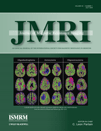MRI-guided cryoablation: In vivo assessment of focal canine prostate cryolesions
Abstract
Purpose
To analyze the appearance of acute and chronic canine prostate cryolesions on T1-weighted (T1w) and T2-weighted (T2w) magnetic resonance imaging (MRI) and compare them with contrast-enhanced (CE) MRI and histology for a variety of freezing protocols.
Materials and Methods
Three different freezing protocols were used in canine prostate cryoablation experiments. Six acute and seven chronic (survival times ranging between 4–53 days) experiments were performed. The change in T2w signal intensity was correlated with freezing protocol parameters. The lesion area on T2w MRI was compared to CE-MRI. Histopathologic evaluation of the cryolesions was performed and visually compared to the appearance on MRI.
Results
The T2w signal increased from pre- to postfreeze at the site of the cryolesion, and the enhancement was higher for smaller freeze area and duration. The T2w lesion area was between the CE nonperfused area and the hyperenhancing CE rim. The appearance of the lesion on T1w and T2w imaging over time correlated with outcome on pathology.
Conclusion
T1w and T2w MRI can potentially be used to assess cryolesions and to monitor tissue response over time following cryoablation. J. Magn. Reson. Imaging 2009;30:169–176. © 2009 Wiley-Liss, Inc.




